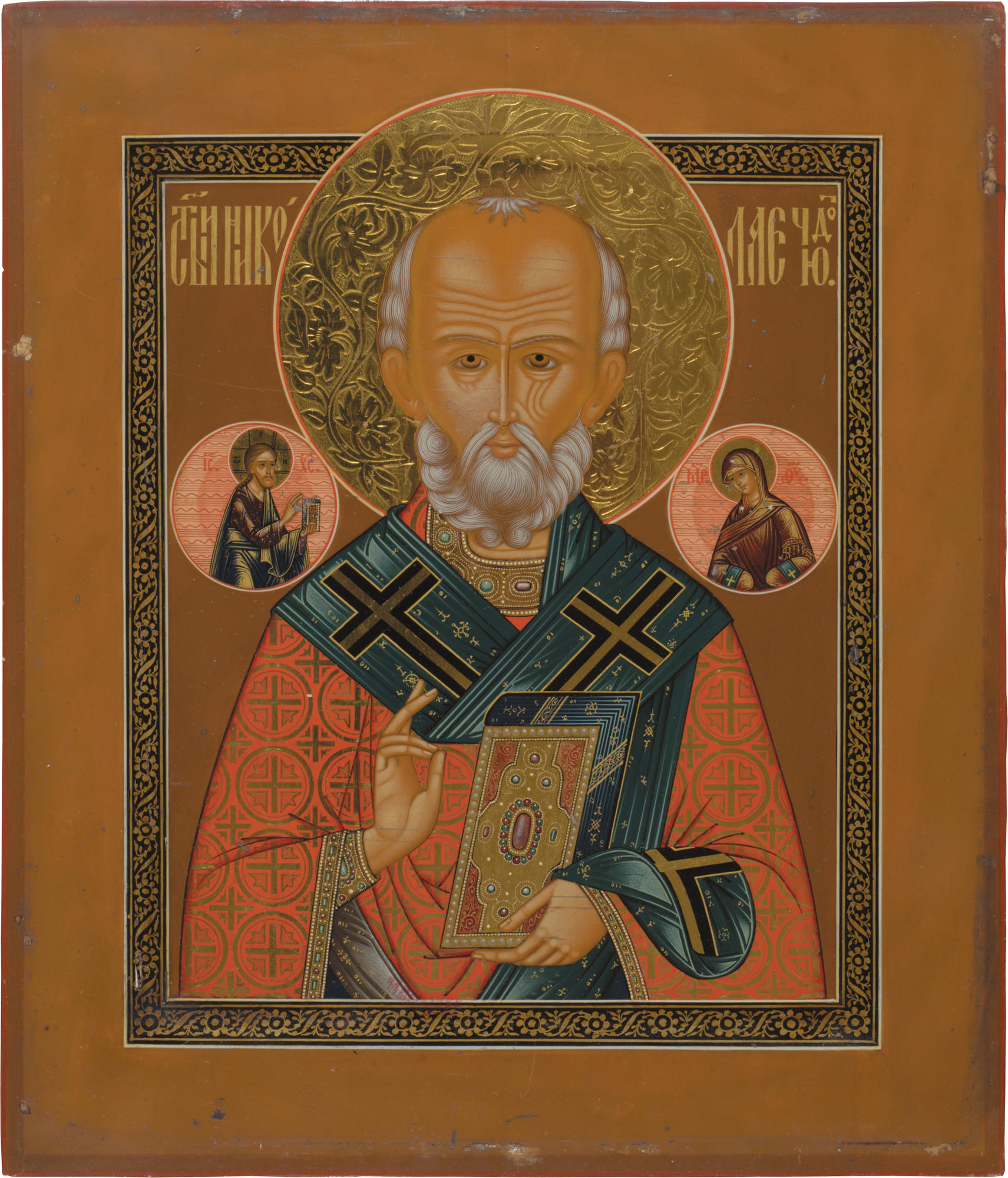According to the legend, St. Nicholas the Wonderworker lived in the period from late 3rd century to early 4th century. He was the archbishop in the city of Myra, which is located in the territory of present-day Turkey, in the southern province of Antalya. The hagiography of St. Nicholas describes many miracles. In Russia, the saint became revered soon after the adoption of Christianity.
Holy Hierarch Nicholas the Wonderworker
Время создания
Late 19th century. Syzran
Размер
31x26 cm
31х26х3 cm
31х26х3 cm
Техника
Wood (board of two parts (?), hollowed out), two inset cross-splines. Canvas is not seen, gresso, tempera, gilding, glazing. Carving and embossing on gresso
Выставка
0
Открыть в приложении#3
Unknown Author
Holy Hierarch Nicholas the Wonderworker
#2
#6
This icon was painted at the end of the 19th century, by an artist from Syzran, a famous old believer center of icon painting in Russia. The saint is holding the closed Gospel Book in his left hand, and he is blessing with two fingers of his right hand.
In Russia, the half-length images of St. Nicholas with the closed Gospel were known as early as pre-Mongol times, as his icons were made in Byzantium, in the Balkans and in the most countries of the Christian world.
Over the left shoulder of the saint is Jesus Christ holding out the Gospel Book, and the Theotokos is over his right shoulder.
In Russia, the half-length images of St. Nicholas with the closed Gospel were known as early as pre-Mongol times, as his icons were made in Byzantium, in the Balkans and in the most countries of the Christian world.
Over the left shoulder of the saint is Jesus Christ holding out the Gospel Book, and the Theotokos is over his right shoulder.
They were usually painted along with St. Nicholas because of the most famous miracle that happened to the saint during his lifetime. According to the apocryphal legend, at the Council of Nicaea in 325, Nicholas was so zealous defending Christian dogma against the heretic Arius that he slapped him. For this, the saint was defrocked and imprisoned, but Christ and the Theotokos returned to him his signs of episcopal dignity — the Gospel and the omophorion, a long, wide ribbon with crosses.
#8
Many posthumous miracles are also attributed to Saint Nicholas. The first one refers to the 11th century: on one of the church holidays, the wife of a rich Kievite dropped their baby into the river, and he immediately drowned. The grieving parents began to pray to the saint, and allegedly, on the same night, a wet child appeared in front of the icon of Nicholas in the Sophia Cathedral in Kiev; later, the parents recognized him as their son. The icon under which the child was found began to be called the icon of Nicholas Wet.
According to the legend, in the 13th or 14th century, another well-known miracle happened in Mozhaisk, a city near Moscow: as the Mongols were advancing on the city, its inhabitants turned to the saint with a prayer. After that, the image of Nicholas appeared in the sky: he held a sword in one hand and Mozhaisk in the other, indicating that he rose to defend the city. The Mongols retreated. Since then, St. Nicholas the Wonderworker has been considered the main patron saint of Mozhaisk.
#9
Russian Christians believed that the saint protected and saved many people, and his patronage extended to travelers, farmers and, in general, to all ‘orphaned and crippled.’ It was in the Orthodox tradition that they began to call him Nicholas the Wonderworker or Nicholas God’s Pleaser.
#10
Orenburg Regional Museum of Fine Arts
читать дальшескрыть
00:00
00:00
1x
Holy Hierarch Nicholas the Wonderworker
Время создания
Late 19th century. Syzran
Размер
31x26 cm
31х26х3 cm
31х26х3 cm
Техника
Wood (board of two parts (?), hollowed out), two inset cross-splines. Canvas is not seen, gresso, tempera, gilding, glazing. Carving and embossing on gresso
Выставка
0
Открыть в приложении
Поделиться



